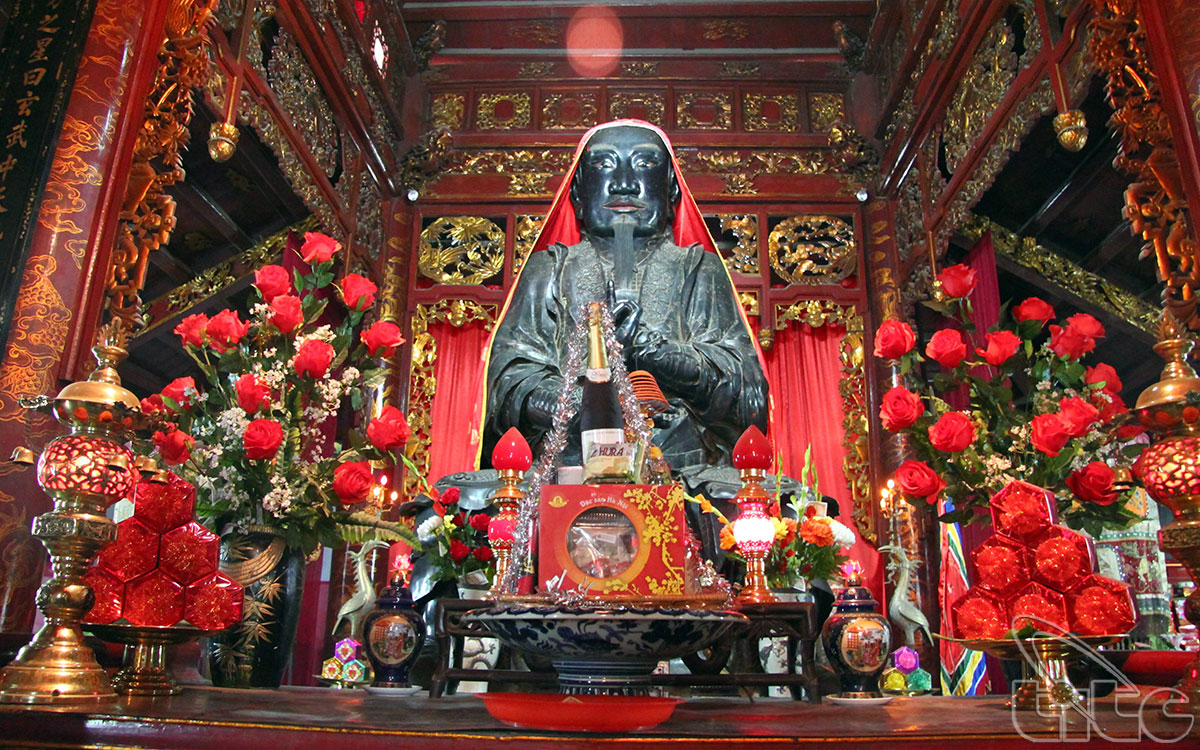Quan Thanh Temple

Situated next to West Lake, alongside Kim Lien Pagoda and Tran Quoc Pagoda, Quan Thanh Temple harmoniously contributes to the architectural landscape and cultural beliefs in the Northwest region of Hanoi. The temple is located at 190 Quan Thanh Street, Quan Thanh Ward, Ba Dinh District, Hanoi.
Quan Thanh Temple has undergone several renovations and expansions in subsequent dynasties. According to inscriptions on steles, the temple was renovated in the years 1618, 1677, 1768, 1836, 1843, 1893, and 1941. During the reign of King Le Hy Tong, Lord Trinh Tuc assigned his son, Trinh Can, to lead the casting of the bronze statue of Huyen Thien Tran Vu to replace the previous wooden statue. In 1794, under the rule of King Canh Thinh, Western Admiral Le Van Ngoc cast a large bronze bell placed in the main hall. During his Northern expedition, King Minh Mang renamed the temple to Chan Vu Quan. The name "Chan Vu Quan" was inscribed in Han characters on the gate, while the horizontal lacquered board in the main hall retained the name Tran Vu Quan. In 1842, King Thieu Tri visited and granted funds to cast a gold ring for the statue of Huyen Thien Tran Vu.

Quan Thanh Temple is built in the traditional Vietnamese architectural style with wooden and tiled structures. The site is surrounded by brick walls, divided into three spatial layers with various architectural elements. Each layer is separated by brick walls with three gates for connectivity (including the central main gate and two side gates). The gates, in order, are Nghi Mon Gate, Tam Quan Gate, and Thanh Dat Gate.
Nghi Mon Gate is the main entrance to the historical site. The gate has three sections with a red-tiled roof and three wooden doors. Above the gate is a stele inscribed with the words "Nghi Mon" (儀門) by King Le Thanh Tong. Tam Quan Gate is the second entrance to the site, with three sections, a green-tiled roof, and three wooden doors. Above the gate is a stele inscribed with the words "Tran Vu Quan" (真武觀) by King Minh Mang. Thanh Dat Gate is the third entrance to the site, with three sections, a green-tiled roof, and three wooden doors. Above the gate is a stele inscribed with the words "Thanh Dat" (成德) by King Thieu Tri. This gate leads to the area of worship for Huyen Thien Tran Vu.
Thanh Dat Temple is the main worship area of the historical site. The temple has three sections with a red-tiled roof and various bronze worship items. The temple worships Huyen Thien Tran Vu, one of the Five Supreme Deities, who guards against evil forces and protects the nation and its people. The bronze statue of Saint Tran Vu was cast in 1677, standing at 3.96 meters, weighing 4 tons, wearing armor, a military hat, and holding an iron spear, facing the North. This statue is considered a masterpiece of Vietnamese sculpture.
Quan Thanh Temple is a precious cultural heritage of the Vietnamese people. It is not just a visually appealing architectural work but also a symbol of spiritual tradition and national security for the Vietnamese. When visiting Quan Thanh Temple, you can admire historical structures, learn about significant events in the past, and feel the courageous and majestic spirit of Saint Tran Vu. Quan Thanh Temple is truly a meaningful and attractive tourist destination for everyone."

